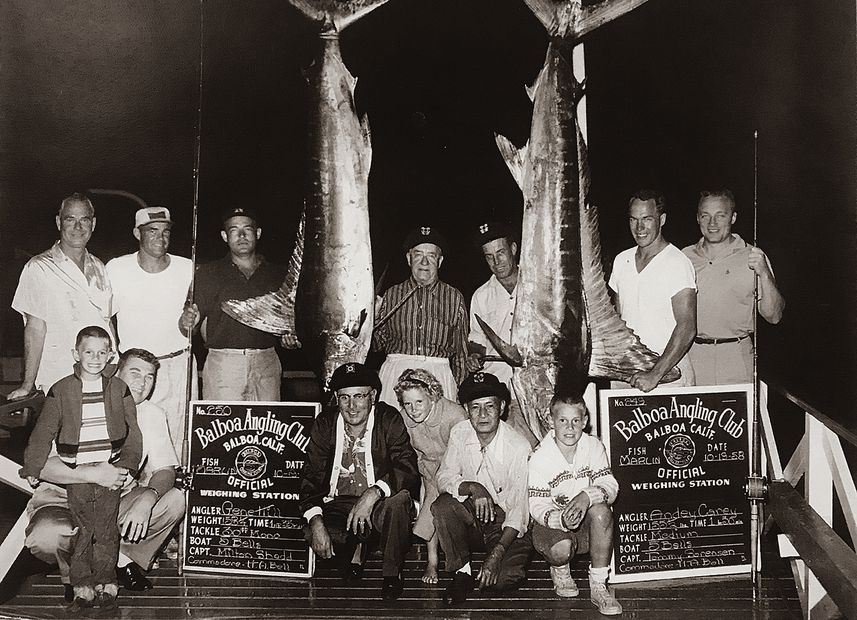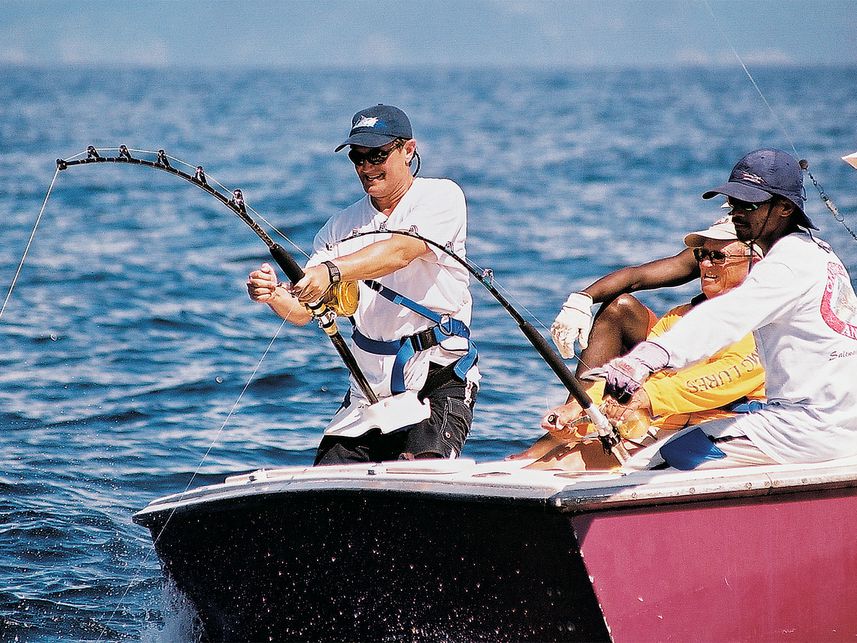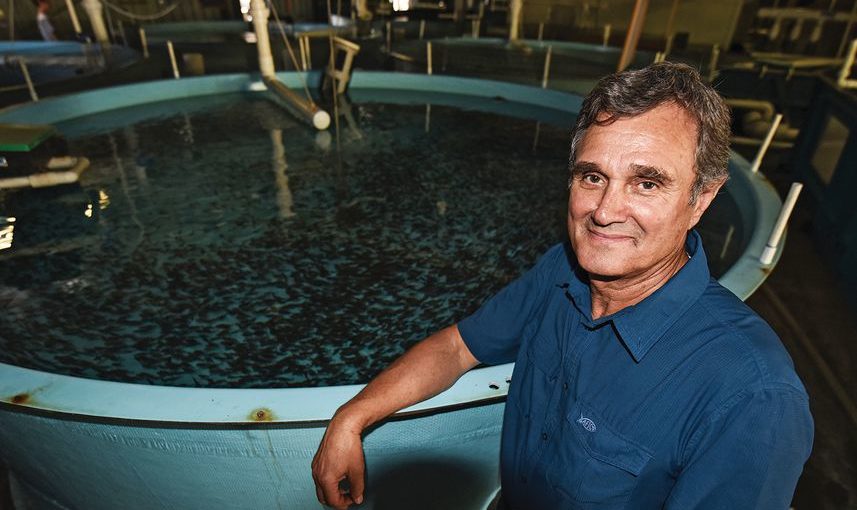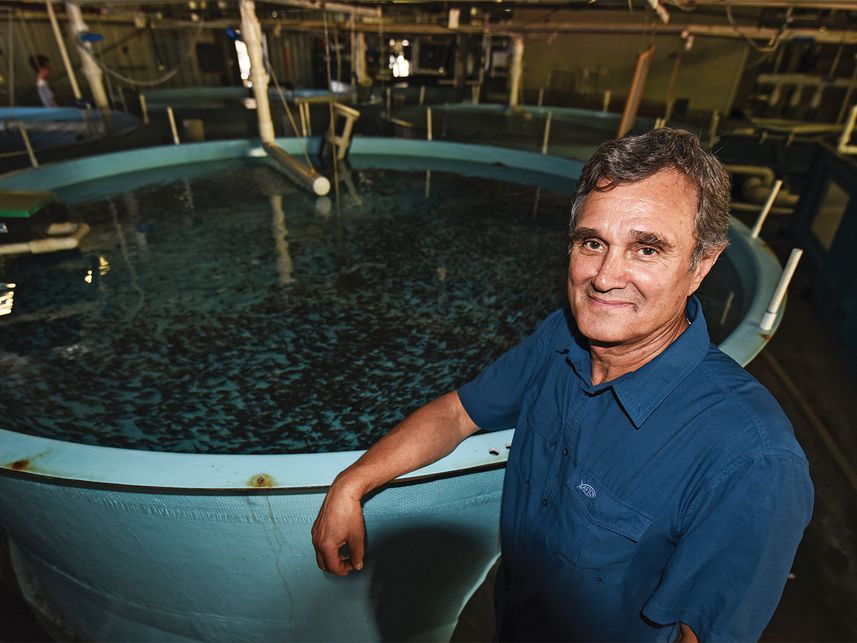Bill Shedd Talks Sport Fishing, Billfish Conservation and More
Meet Bill Shedd
As chairman of the American Fishing Tackle Company—better known as AFTCO—Bill Shedd not only has his finger on the pulse of the sport-fishing industry, but he is also a driving force for conservation efforts around the world. Two of his sons run the day-to-day operations for the company: Casey Shedd is president and Cody Shedd is vice president of finance, with Bill’s daughter, Christie, supporting both positions. With a third generation of Shedds poised to continue the family’s strong work ethic and passion for fishing, Bill can now turn his efforts to other critically important issues, such as protecting anglers’ rights and the growth of aquaculture in the United States.
Q: Your father co-founded SeaWorld. What effect did that have on you growing up?
A: It opened my eyes to the wonders of the ocean and also created some interesting experiences. I was in high school when we received a weekend phone call at home for my dad that a dolphin was stranded on the beach in Newport. He was out fishing, so I took mom’s station wagon and gathered up a bunch of people on the beach to use their towels to carry the dolphin, which weighed a few hundred pounds, up to the car. Then I grabbed a couple of buckets that some kids were playing with, filled them with salt water, and asked the best-looking girl on the beach to hop in the back of the car and keep the dolphin wet while we drove to SeaWorld in San Diego. Putting a dolphin in the back of your station wagon would get you arrested today, but those were different times. But more important, I learned about ocean conservation. Dad often reminded me that we took creatures from the ocean that belonged to nobody, but yet, also belonged to everybody. With the success of SeaWorld, the entire Shedd family had a responsibility to find ways to do good things for the ocean and its creatures. AFTCO has contributed more than 10 percent of our profits to conservation efforts every year since 1973.
Q: What’s the history behind AFTCO?
A: J.C. Axelson founded the company in 1958—my mom and dad bought the business in 1973 when it had three employees and used only a small portion of a 2,400-square-foot rented building. Today, we are fortunate to have 70 employees in our own 117,000-square-foot building in Santa Ana, California.

Q: What are some of the successes you’ve seen in pelagic-species conservation?
A: In my 40 years of working on these issues, the most important specific thing that has ever happened for marlin and sailfish was the Billfish Conservation Act. Anyone who cares about billfish owes a debt of gratitude to the IGFA and Wild Oceans, which made that happen. Nothing will ever be done in the future—other than a worldwide ban on longlines, which I don’t believe will ever happen—that could be more important for billfish conservation. There have also been successes in conventional and satellite tagging that has led to better-informed management, the widespread use of circle hooks, and longline and gill-net bans in specific areas. The general conservation ethic has developed within the sport-fishing community over the past 30 years, and it’s not just with billfish. Even with good-eating fish like tuna and dolphin, anglers today are far more likely to keep only what they can reasonably eat or give to friends, and then release the rest
Q: How do we continue to protect anglers’ rights?
A: There is a major threat on the horizon right now. The worldwide environmental community has its sights on “safeguarding biodiversity” by protecting 30 percent of all land and water—both salt and fresh—by 2030. Unless they can plainly state otherwise, their past actions in California and other places say that when it comes to the ocean, these protected areas mean no fishing at all, not even catch-and-release. They have a billion-dollar grant behind what they call “30 by 30” to get it done. In the US, much of that money is going directly to both the state and federal levels. We need to continue to remind fishery managers that we are the true fishery conservationists. We contribute over a billion dollars a year toward managing and conserving the fish through licenses and fees. As individual anglers and industry members, we need to continue to support organizations such as the ASA, CCA, IGFA, NMMA, TBF and others that are working on our behalf.

Q: How did you start the AFTCO Tag-Flag program?
A: In 1986, I was bluefin tuna fishing off New Jersey with Pete Barrett. I saw how big the fleet was and wondered how many of these fish were being tagged to provide information for proper future management. When I learned that fewer than a dozen bluefin had been tagged in the entire Atlantic the previous year, I wanted to figure out a way to increase that number. I called Ed Scott, who ran the NMFS Atlantic tagging project at the time, and told him of my plan for a program called Tag-A-Tuna for Tomorrow. The program was widely successful; over the years, we even had one individual captain named Al Anderson tag 5,000 bluefin tuna. In 1989, Ed asked me if AFTCO could expand the program to include billfish. The AFTCO Tag-Flag program started that year and ran until 2007. The program made a huge contribution in promoting the release ethic and tagging of pelagic gamefish in both the Atlantic and Pacific. In fact, Gene Vander Hoek credits the Tag-Flag program for directly changing the release ethic in Kona. He received a lot of publicity for winning multiple Captain of the Year awards—people started booking him instead of other captains who refused to tag or even release their billfish. The other captains accused Gene of stealing their customers, but Gene simply explained to them that their clients would come back if the other captains began tagging and releasing their billfish instead.
Q: Aquaculture is one of your new projects. How’s that going?
A: Every year since the beginning of time, except maybe during a world war or some other extreme event, man has taken more fish out of the sea than the year before. That all changed around 1985, when Mother Nature could produce no more increases. The take flatlined and has even declined slightly since then. The problem is that the US has not participated in ocean aquaculture in a meaningful way. The US has the largest coastline of any country in the world, and yet we rank 17th in aquaculture. Ninety percent of our seafood is imported, and 50 percent of that is aquaculture. As a country, we’ve had our head in the sand for a long time. That is beginning to change with a recent Executive Order from President Trump. Hopefully the US can now begin to catch up to the rest of the world.
Q: What kind of legacy do you want to leave?
A: A healthy ocean full of fish for future generations to enjoy just as much as so many of us in our generation and the previous generations have also enjoyed. —Sam White






















